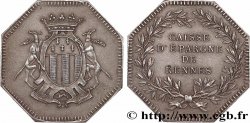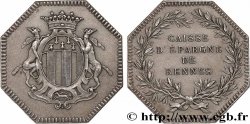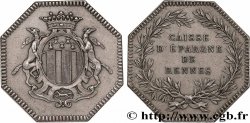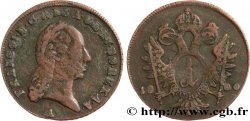E-auction 105-55212 - fjt_073015 - LES CAISSES D'ÉPARGNE Le Havre 1822 (après 1880)
Devi Sign-in ed essere un offerente approvato fare un'offerta, Login per fare offerte. Conti sono soggetti ad approvazione e di approvazione sono raggiunti entro 48 ore. Non aspettare fino al giorno di una vendita si chiude per registrarti.Confermando la tua offerta su questo oggetto ti impegni ad un contratto legalmente vincolante per l'acquisto di questo prodotto e fare clic su «offerta» costituisce accettazione dei termini di utilizzo de e-auctions cgb.fr.
Offerta deve essere collocato in euro gli importi interi vendita only.The si chiuderà al momento sulla descrizione dell'oggetto, eventuali offerte pervenute al sito dopo l'orario di chiusura non verranno eseguite. Volte transmition possono variare e le offerte potrebbero essere respinto se si attende per gli ultimi secondi. Per ulteriori informazioni ckeck le FAQ.
SENZA COSTI PER GLI ACQUIRENTI.
SENZA COSTI PER GLI ACQUIRENTI.
| Valutazione : | 75 € |
| Prezzo : | 25 € |
| Offerta maxima : | 27 € |
| Data di fine vendita : | 20 aprile 2015 15:22:30 |
| partecipanti : | 8 partecipanti |
Tipo : Le Havre
Data: 1822 (après 1880)
Metallo : argento
Diametro : 38,5 mm
Asse di coniazione : 12 h.
Peso : 25,74 g.
Orlo : lisse
Marchio : (corne) 1ARGENT
Commenti sullo stato di conservazione:
Un petit choc sur la tranche à quatre heures. Très bel exemplaire avec une patine sombre
N° nelle opere di riferimento :
Diritto
Descrittivo diritto : Écu aux armes de la ville du Havre posé sur un cartouche et couronné, le tout sur un amas d’objets agricoles et industriels ; au-bas signature RIEUL PÈRE GRAV..
Rovescio
Titolatura rovescio : * CAISSE D’ÉPARGNE * DU HAVRE.
Descrittivo rovescio : Légende circulaire. Au centre en six lignes dans une couronne formée de deux branches d’olivier : AUTORISÉE/ PAR/ ORDONNANCE/ ROYALE/ DU 16 JANVIER/ 1822.
Commento
Exemplaire avec le poinçon corne 1 ARGENT sur la tranche. Les caisses d'épargne, imaginées au XVIIIe siècle, sont nées au XIXe siècle avec la Révolution industrielle et à la suite d'idées généreuses de protection de l'épargne des salariés et de rendre les économies productives tout en les mettant au service de la Nation. La première caisse d'épargne et de prévoyance est créée à Paris en 1818 puis cet exemple est suivi en province entre 1819 et 1823 à Bordeaux, Rouen, Marseille, Nantes, Brest, Metz, Le Havre, Lyon, Troyes, Reims, etc.. Dans les années 1830-1834, cinquante et une nouvelles caisses d'épargne sont créées tandis qu'en 1835, une loi vient les organiser. De 1835 à 1845, deux cent soixante-trois nouvelles caisses apparaissent, privées ou municipales. En 1870, le territoire compte cinq cent vingt-cinq caisses dont sept hors métropole. Les jetons et médailles des caisses d'épargne servent comme jetons de présence. La numismatique des caisses d'épargne a fait l'objet d'une étude d'Yves Jacqmin, Numismatique des caisses d'épargne privées (jetons et médailles), Paris : Le léopard d'or, 1987.
example with the horn hallmark 1 SILVER on the edge. Savings banks, imagined in the 18th century, were born in the 19th century with the Industrial Revolution and following generous ideas of protecting employees' savings and making savings productive while putting them at the service of the Nation. The first savings and provident fund was created in Paris in 1818 and this example was followed in the provinces between 1819 and 1823 in Bordeaux, Rouen, Marseille, Nantes, Brest, Metz, Le Havre, Lyon, Troyes, Reims, etc. In the years 1830-1834, fifty-one new savings banks were created while in 1835, a law came to organize them. From 1835 to 1845, two hundred and sixty-three new banks appeared, private or municipal. In 1870, the territory had five hundred and twenty-five banks, seven of which were outside metropolitan France. Savings bank tokens and medals serve as attendance tokens. Savings bank numismatics was the subject of a study by Yves Jacqmin, Numismatics of Private Savings Banks (Tokens and Medals), Paris: Le polaire d'or, 1987
example with the horn hallmark 1 SILVER on the edge. Savings banks, imagined in the 18th century, were born in the 19th century with the Industrial Revolution and following generous ideas of protecting employees' savings and making savings productive while putting them at the service of the Nation. The first savings and provident fund was created in Paris in 1818 and this example was followed in the provinces between 1819 and 1823 in Bordeaux, Rouen, Marseille, Nantes, Brest, Metz, Le Havre, Lyon, Troyes, Reims, etc. In the years 1830-1834, fifty-one new savings banks were created while in 1835, a law came to organize them. From 1835 to 1845, two hundred and sixty-three new banks appeared, private or municipal. In 1870, the territory had five hundred and twenty-five banks, seven of which were outside metropolitan France. Savings bank tokens and medals serve as attendance tokens. Savings bank numismatics was the subject of a study by Yves Jacqmin, Numismatics of Private Savings Banks (Tokens and Medals), Paris: Le polaire d'or, 1987







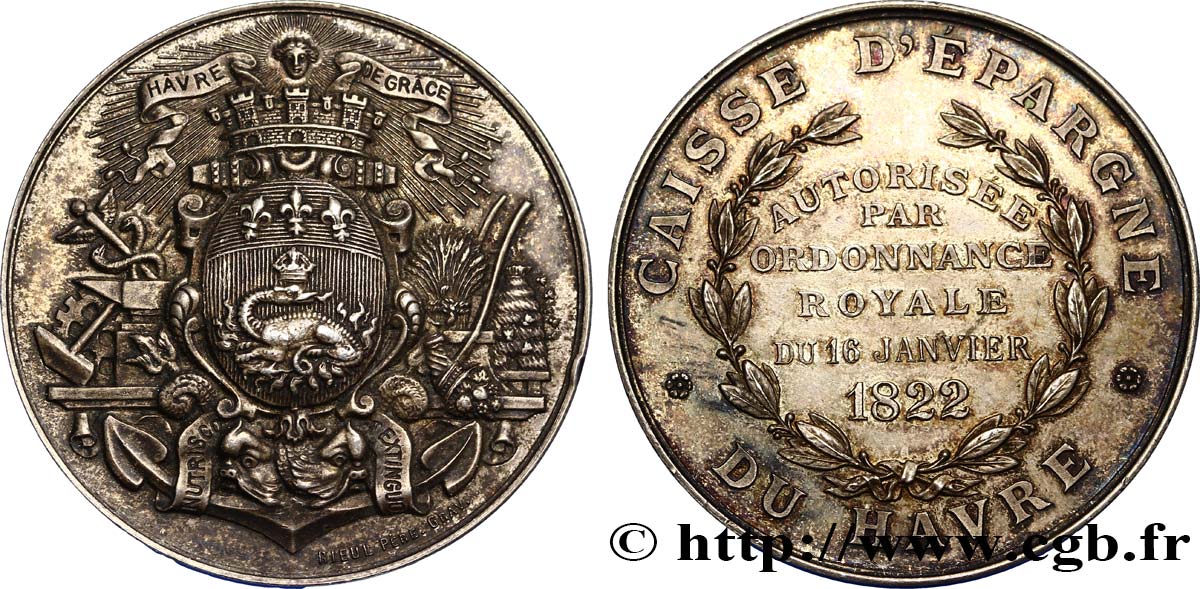
 Segnalare un errore
Segnalare un errore Stampate la pagina
Stampate la pagina Condividi mia selezione
Condividi mia selezione Fai una domanda
Fai una domanda Consegnare / vendere
Consegnare / vendere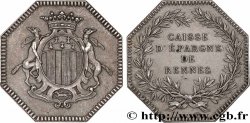
 Descrittivo
Descrittivo
